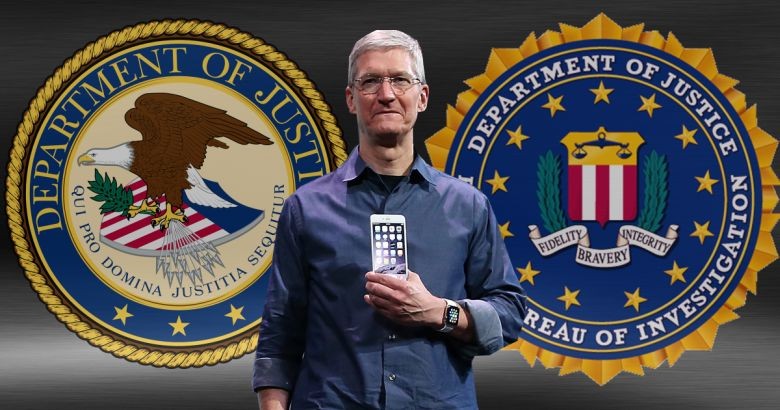
Το σίριαλ της δικαστικής διαμάχης Apple vs FBI έλαβε τέλος με την ομοσπονδιακή υπηρεσία ερευνών να βρίσκει τρόπο πρόσβασης στo iPhone 5c του Σαγιέντ Ριζουάν Φαρούκ, μέσω άλλης οδού, με τη βοήθεια της Ισραηλίτικης Cellebriteενδσ.
Η υπόθεση αφορά την πρόσβαση στα προσωπικά δεδομένα του Σαγιέντ Ριζουάν Φαρούκ – του δράστη του Σαν Μπερναντίνο ο οποίος μαζί με τη σύζυγο του σκότωσαν το περασμένο Δεκέμβριο 14 ανθρώπους στην Καλιφόρνια- ωστόσο ανοίγει τον ασκό του Αιόλου καθώς το μέλλον της ασφάλειας των προσωπικών δεδομένων όλων των χρηστών θα είναι πλέον αβέβαιο με τις μυστικές υπηρεσίες να έχουν στα χέρια τους το “μαγικό κλειδί”.
Ποια είναι η τεχνική που χρησιμοποιήθηκε από το FBI; Πιθανώς το NAND mirroring το οποίο πρότεινε και ο ίδιος ο Edward Snowden:
The FBI says Apple has the ‘exclusive technical means’” to unlock the phone, Snowden said during a discussion at Common Cause’s Blueprint for Democracy conference.
Respectfully, that’s bullsh*t.
All the FBI needs to do to avoid any irreversible auto erase is simple to copy that flash memory (which includes the Effaceable Storage) before it tries 10 passcode attempts. It can then re-try indefinitely, because it can restore the NAND flash memory from its backup copy […]
The FBI can simply remove this chip from the circuit board (“desolder” it), connect it to a device capable of reading and writing NAND flash, and copy all of its data. It can then replace the chip, and start testing passcodes. If it turns out that the auto-erase feature is on, and the Effaceable Storage gets erased, they can remove the chip, copy the original information back in, and replace it. If they plan to do this many times, they can attach a “test socket” to the circuit board that makes it easy and fast to do this kind of chip swapping.
Αξίζει να σημειωθεί πως η μέθοδος αυτή δεν μπορεί να χρησιμοποιηθεί σε μεταγενέστερα μοντέλα iPhone με επεξεργαστή +A7 που διαθέτει τεχνολογία Secure Enclave:
The Secure Enclave is a coprocessor fabricated in the Apple A7 or later A-series processor. It utilizes its own secure boot and personalized software update separate from the application processor. It provides all cryptographic operations for Data Protection key management and maintains the integrity of Data Protection even if the kernel has been compromised.
The Secure Enclave uses encrypted memory and includes a hardware random number generator. Its microkernel is based on the L4 family, with modi cations by Apple. Communication between the Secure Enclave and the application processor is isolated to an interrupt-driven mailbox and shared memory data bu ers.
Each Secure Enclave is provisioned during fabrication with its own UID (Unique ID) that is not accessible to other parts of the system and is not known to Apple. When the device starts up, an ephemeral key is created, entangled with its UID, and used to encrypt the Secure Enclave’s portion of the device’s memory space.
Additionally, data that is saved to the le system by the Secure Enclave is encrypted with a key entangled with the UID and an anti-replay counter.
The Secure Enclave is responsible for processing ngerprint data from the Touch ID sensor, determining if there is a match against registered ngerprints, and then enabling access or purchases on behalf of the user. Communication between the processor and the Touch ID sensor takes place over a serial peripheral interface bus. The processor forwards the data to the Secure Enclave but cannot read it. It’s encrypted and authenticated with a session key that is negotiated using the device’s shared key that is provisioned for the Touch ID sensor and the Secure Enclave. The session key exchange uses AES key wrapping with both sides providing a random key that establishes the session key and uses AES-CCM transport encryption.
Διαβάστε επίσης: Ανοικτή επιστολή του Tim Cook για τους κινδύνους που εγκυμονεί η δημιουργία “backdoor” για πλήρη πρόσβαση στα προσωπικά δεδομένα χρηστών
Η Apple, μετά τις νεότερες εξελίξεις, εξέδωσε την παρακάτω ανακοίνωση:
From the beginning, we objected to the FBI’s demand that Apple build a backdoor into the iPhone because we believed it was wrong and would set a dangerous precedent. As a result of the government’s dismissal, neither of these occurred. This case should never have been brought.
We will continue to help law enforcement with their investigations, as we have done all along, and we will continue to increase the security of our products as the threats and attacks on our data become more frequent and more sophisticated.
Apple believes deeply that people in the United States and around the world deserve data protection, security and privacy. Sacrificing one for the other only puts people and countries at greater risk.
This case raised issues which deserve a national conversation about our civil liberties, and our collective security and privacy. Apple remains committed to participating in that discussion.
Η Apple λοιπόν δεν είναι πλέον υποχρεωμένη να αναπτύξει κερκόπορτα στο λειτουργικό σύστημα iOS και στη συνέχεια να παραδώσει το σχετικό λογισμικό στο FBI… τουλάχιστον για την ώρα και μέχρι να βρεθεί μία άλλη παρόμοια υπόθεση που θα οδηγήσει σε νεότερες εξελίξεις.

